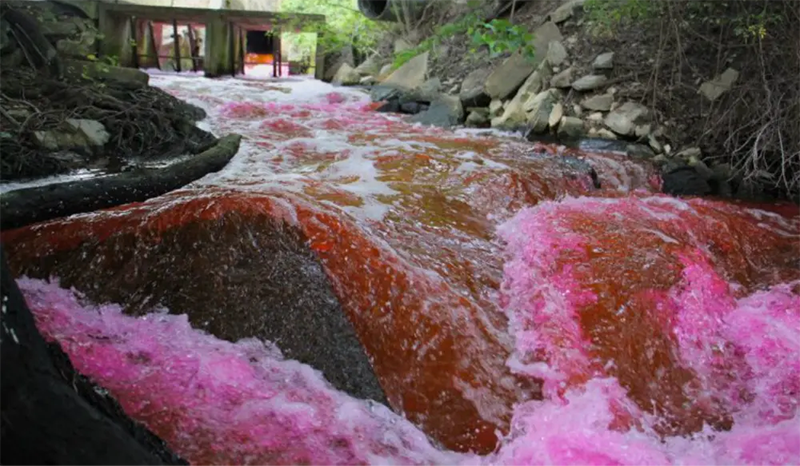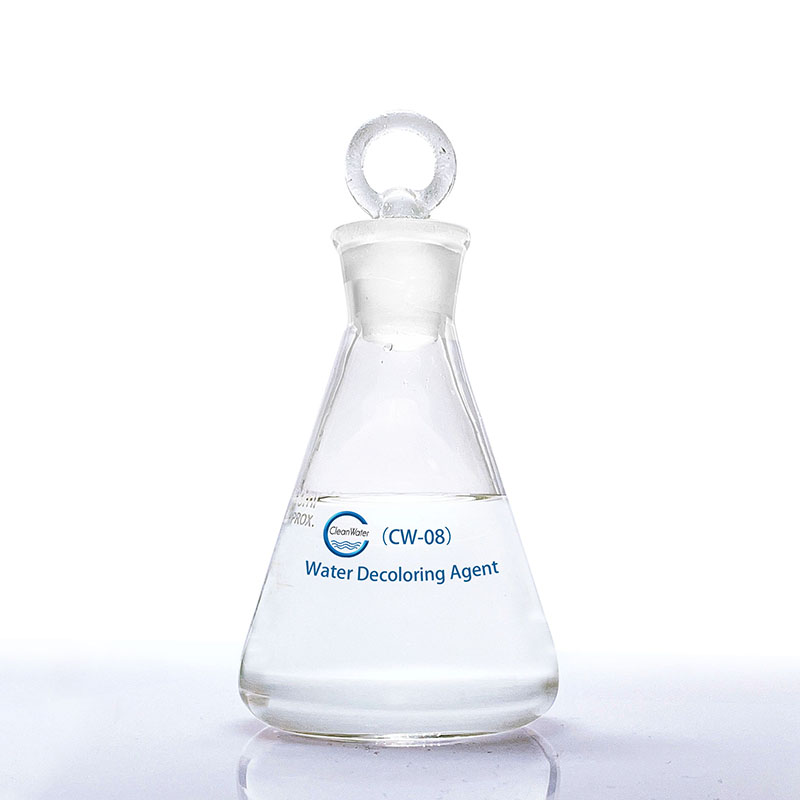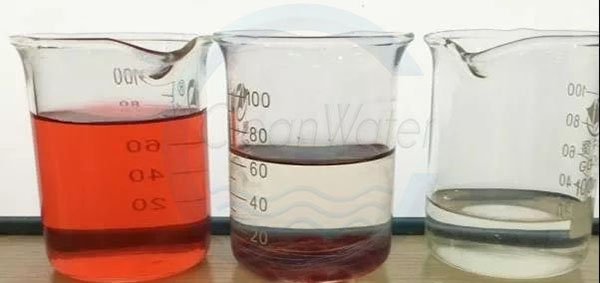
Recommended products: High-efficiency decolorizing agent flocculant CW08
Description:
This product is dicyandiamide formaldehyde resin, quaternary ammonium salt cationic polymer
Application range:
1. Mainly used in the treatment of industrial wastewater such as textile, printing and dyeing, papermaking, pigments, mining, ink, etc.
2. It can also be used for the decolorization of high-chroma wastewater from dye factories, and can be used for the treatment of wastewater such as active, acidic and disperse dyes.
3. This product can also be used as a reinforcing agent, sizing agent and charge neutralizer for papermaking.
Advantages:
1. Strong decolorization and removal of COD and BOD capabilities
2. Faster and better flocculation and sedimentation
3. Pollution-free (aluminum, chlorine, heavy metal ions, etc.)

Printing and dyeing wastewater decolorization experiment
I. Experimental purpose
Select appropriate reagents according to the nature of the sewage, provide optimized treatment solutions, and the treated effluent meets customer requirements.
II. Water sample source: wastewater from a printing and dyeing factory in Shandong
1. PH value 8.0 2. COD: 428mg/L 3. Chroma: 800
III. Experimental reagents
1. Decolorizing flocculant CW-08 (with 2% concentration)
2. Polyaluminium chloride solid (with 10% concentration)
3. Anion PAM (0.1% concentration)
IV. Experimental process
Take 500ml of wastewater, add PAC: 0.5ml and stir, then add decolorizing flocculant CW-08: 1.25ml, stir, then add PAM0.5ml and stir, the flocs become larger and settle quickly, and the effluent is clear and colorless.

From left to right, they are raw water, flocculation sedimentation water, and sedimentation effluent. The effluent index chroma: 30, COD: 89mg/L.
V. Conclusion
The dyeing wastewater has high chromaticity but low turbidity. It is estimated that the synergistic effect of decolorizer and PAC is better.
Post time: Dec-26-2024

